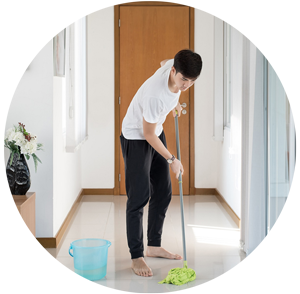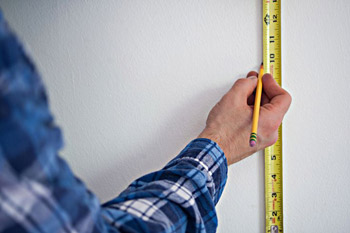What is an ERV?

You probably haven’t heard of an ERV before, but not many people have, even if they have unwittingly been using them.
ERV stands for Energy Recovery Ventilator and is a ventilation system that is designed to be connected to your existing HVAC system to help draw clean, fresh air into your home and remove the stale air.
They work in conjunction with an HVAC system, using the energy in exhausted air to cool and dehumidify in the warmer seasons and heat and humidify in the cooler seasons. By doing this, they improve the entire efficiency of your HVAC system, allowing the HVAC to be smaller and draw less power.
How Does an Energy Recovery Ventilator Work?

An ERV is either connected to the ductwork of your HVAC system or ducted into individual rooms and works using two fans, one to draw clean and fresh air into the system and the other to exhaust used air out of the building. Just by doing this, the ERV is already helping to remove toxins, pollutants, and allergens.
As the cold air enters the building and the warm air exits the building (if it is a cold day), the ERV transfers the heat and moisture from one air stream to the other. The heat is transferred from the exhausted air into the cold air coming in. There is usually also a filter in the ERV system that will filter out any pollutants and toxins as the air is coming in. The clean air is then distributed around the building.
An ERV is very efficient, and 99% of the heat is transferred between the two air streams, so the air coming in is almost as warm as the air in the building and does not need to be heated much more. This energy saving translates to lower utility bills for you.
The Benefits of an ERV
There are many benefits of having an ERV installed as part of your HVAC system or having one attached to the ducts on your existing system.

Cleaner air: Toxins, pollutants, mold, allergens, and more are filtered out of your indoor air by an ERV system, and the air that is pulled in is not only clean and fresh, but it is also filtered before it is spread around your home. People with allergies and asthma can breathe easier with cleaner air, and the air is healthier for everyone.

Better Sleep: When you have cleaner air, you are not plagued by coughs, sneezing, blocked noses, or sore throats through the night. Instead, you have clean air and a night of more restful sleep.

Lower Utilities: Because you are transferring the energy between the two air streams, you are spending less money on heating the incoming air. This efficiency means more money saved and more money for you to spend on life’s little luxuries.

Cleaner Home: As clean is pulled in and cleaned, and dirty air expelled, you have less dust in your home. That means that you have a cleaner home and you have to clean less frequently.

Safer Home: With less mold and mildew coming into your home and a more controlled climate, dangerous substances have less chance of growing. The humidity is better controlled, and your home will be safer and healthier.

Less Maintenance: As part of an efficient HVAC system, an ERV will mean that your HVAC will last longer and will not need as much maintenance. This saves you valuable time and money.
What’s the Difference Between an ERV System and an HRV System?

ERVs and HRVs (Heat Recovery Ventilators) are very similar in that both systems use air exchange systems to enhance the air quality in your home and lower your heating costs, but there are some subtle differences.
Both of the systems use two fans to create two air streams, one coming from outside and one from inside and use that to transfer heat between the two air streams so that the incoming air is heated by the outgoing air before it is transferred into your home.
The subtle difference is that an ERV system will also transfer the moisture between the two air streams, while an HRV will only transfer the heat.
If you don’t care about the humidity, then an HRV will deal with heat transfer. If you find that there is never enough humidity in your home or always too much, then choose an ERV.
What to Look For When Buying a Residential ERV
There are a few things to think about before you invest in an ERV.

Size: Obviously, the larger the room or home, the larger the unit will have to be. Before you go out and buy an ERV, check the area that it will be supplying and buy a unit based on that measurement. We always recommend going a little larger than needed, just in case. It is always better to have a little too much than not quite enough.

Performance: These units are energy efficient, but some are more efficient than others. The higher the efficiency, the more energy saved, and the cheaper your utility bills will be. Compare the energy efficiency of multiple models and determine if the extra cost is worth it.

Decibel Level: These units are naturally quiet, but some are quieter than others. If you are placing the unit close to where people are going to be working, studying, or anything else where you need a lot of silence, then look for an ERV with no noise. If the ERV is hidden away, then you don’t have to worry about the decibel level.

Warranty: Most companies build their units to last, and a lengthy warranty shows faith in the product. The longer the warranty, the better it is for you, and it is a good indication that the ERV will last and, if it does not, then you are covered. Be sure to read the warranty details before buying so that you know exactly what the warranty covers.
How to Size a Residential ERV
There are two main ways to size an ERV for your residence, and each will give you a result that relates to the CFM (Cubic Feet per Minute) that the ERV will supply.
Square Footage

This is the traditional method of measuring your home for an ERV. To measure this way, you have to measure the square footage of your home, which can be time-consuming unless you already know it. When you are measuring, be sure to include the basement in your calculations too.
Take the square footage, multiply it by the height of your ceiling, divide that by 60, and multiply that by 0.35. This will give you the CFM that you need for a minimum of 0.35 air changes per hour. Once you have your result, you can look for an ERV with the same CFM rating.
Room Count

If that is too time-consuming, you can count the number of rooms instead and use that to create a rough calculation that will give you an approximate CFM value. Here is what to do.
Take the number of master bedrooms and multiply that number by 20. Take the number of other rooms in your home (including bedrooms, bathrooms, laundry room, etc.) and multiply that number by 10. Add the two numbers together, and add 20 if you also have a basement. The final number is your CFM value.
How to Install a Residential ERV

Unless you know what you are doing, installing an ERV is not a DIY-friendly experience. Though, if you have a little experience with HVAC systems or are adept at DIY, you may be able to save yourself some money by completing the installation without calling out a professional.
When the unit comes, you may have to put it together by following the included instructions. It is critical that you follow the instructions carefully as any missing parts or incomplete construction could result in a malfunctioning appliance.
After construction, you will need to mount the main unit safely on the wall before rigging the pipes and ductwork. This is where it can get tricky, especially if you do not have the necessary holes leading to the exterior of your home. If you are doing it yourself, make sure to seal any gaps around pipes. And, if you are ever unsure about any step of the installation process, don’t be afraid to call in a professional.
Maintaining a Residential ERV
Installation of your ERV is only the first step. To get the most out of it and to give it the best chance of lasting for as long as possible, you need to take care of and maintain the unit.
Follow the Instructions
This is key for any device or appliance in your home. Never assume anything, such as being able to wash the filter in your ERV system instead of replacing it, and always follow the maintenance instructions included.
Inspect

You should inspect the ERV unit every six months and take note of any damage, wear, or problems. This way, you are going to spot small problems before they become big ones, and you are going to be able to easily fix them without having to spend more money at a later date.
Replace Filter
The included manual will let you know how often you should replace the filter in your unit. Again, it is important that you follow this. By replacing the filter when you should, not only are you protecting the unit, but you are keeping your air clean too. As the filter attracts dirt, the air cannot flow through as well. If it becomes blocked, you are not going to have clean air, and there is a chance that the ERV could break down.
Are ERVs and HRVs Worth it?

When you get down to it, you don’t need an ERV, but that does not mean that you should not get one. You may have to pay a little to have one installed, but there are so many benefits that it can be worth it.
Even looking at the cost alone, you can end up saving money over time with an ERV. But the cost is not the only factor. You save money because ERVs create a greener HVAC system. This means that you are using less energy due to heat transference, and that is beneficial for the environment.
ERV units also give cleaner air than HVAC systems, which is incredibly beneficial to those with allergies or asthma and great for everyone. I mean, who doesn’t want to breathe cleaner and fresher air?
Finally, you also have humidity control. If your home is always too dry or too humid, then an ERV can help you to achieve balance.
Wrapping up, an ERV is definitely worth it and will bring many benefits to your home, as long as you can afford it.
This page last updated May 26, 2021